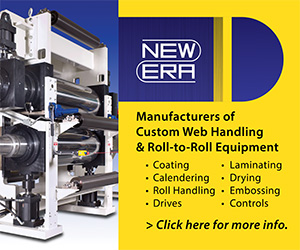Coating Matters | Slot Die Design Considerations
- Published: July 02, 2013
If you'd like to hear from Mark Miller's own lips rather than read his column titled, "Coating Matters | Slot Die Design Considerations," click on his podcast below:
{mp3}slot-die-design-considerations{/mp3}
It’s always good to have a perspective from all areas of a business. In the world of manufacturing, an engineer learns a lot by getting out on the shop floor and turning some knobs. It is also helpful for the manufacturing engineer to have an appreciation of the physical and functional limits of the equipment. This insight can be garnered by engaging in a dialogue with the vendor in question, especially if you have access to the individuals who are involved in the design of the equipment. This design perspective will help lead front line manufacturing projects as companies look to improve efficiencies and drive down production costs.
A good example is the design and manufacturing of a slot die for fluid coating operations. The basis of this pre-metered system is that there are two die body halves that are held together to form a slot for fluid to be deposited on a substrate. The opposite end of this slot is where the fluid is fed in and distributes along a manifold (or flow chamber).
The goal of the manifold is to place the fluid exiting the slot at a consistent velocity so the flow phenomena is predictable when interacting with the substrate. The interfacial chemistry of the fluid and substrate are enough to understand without having to deal with irregular fluid vectors exiting the slot die.
What is awesome about the physical capability of the slot die is that the manifold can be designed for fluids ranging from 1–500,000 cP and still perform as required for product performance. Remember, however, that one manifold cannot coat this entire range! One slot die manifold works for a “family” of fluids within a smaller range of shear viscosity. I am pointing out the robustness of the technology, not the capability of one piece of equipment.
The other amazing characteristic of the slot die technology is the ability to coat from any position around a substrate—horizontal, vertical, above, below…. Because the slot die is a closed system, what goes in comes out, and stopping the pump stops the flow of fluid to the substrate. So if you have heard of curtain coating, this is simply a slot die coater arranged to drop a fluid curtain down from a height, while draw coating is positioning a slot die in a horizontal arrangement farther away from the substrate than in a typical proximity arrangement.
So what can you learn from a slot die designer that will help you in your roll-to-roll manufacturing process? First of all, the slot die has a capability within the rheology range for which the die was defined. This may be a couple thousand cP for some fluids, while only a handful of cP for other fluids.
There are some critical surfaces that define the coating capability with the slot die. These include lip design, lip gap, offset of the die bodies, attack angle, die to substrate gap, and precision of flow surfaces (both inside and out). The boundary conditions of these factors, in addition to the temperature, pressure, and surface energy of the fluid and substrate, predict the flow behavior of the slot die. With this knowledge, an experimental design can be developed around these factors and a coating window established. And you thought the vendor was useful just when you wanted to buy something!
If you can find a vendor who has also lived this life of having perspective from the manufacturing side in addition to the equipment manufacturing side, you have found a very valuable resource indeed. With process-oriented and knowledgeable vendors, you can collaborate on projects to analyze coating defects, develop equipment and process solutions, and impact the bottom line of your business with increased efficiency. Collaboration is key!
Roll-to-roll coating industry expert Mark Miller, owner of Coating Tech Service, has 14+ years of slot die coating experience and troubleshooting. He is the author of PFFC's Coating Matters column. Contact him at 715-456-9545; mark@coatingtechservice.com; www.coatingtechservice.com.







